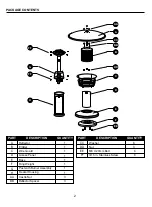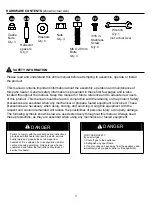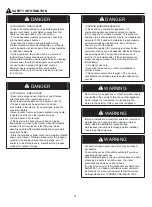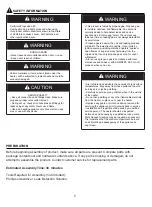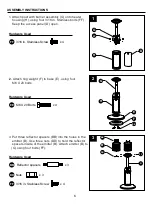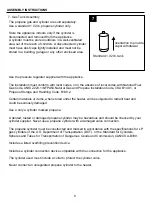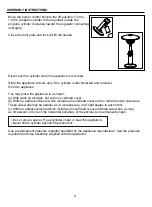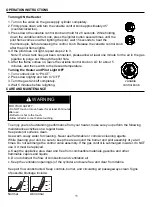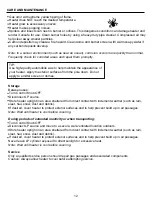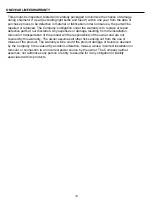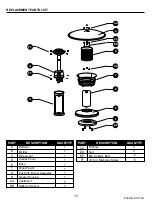
8
ASSEMBLY INSTRUCTIONS
7
7. Gas Tank Assembly
The propane gas and cylinder are sold separately.
Use a standard 1.02 lb. propane cylinder only.
Store the appliance indoors only if the cylinder is
disconnected and removed from the appliance.
A cylinder must be stored outdoors in a well-ventilated
area out of the reach of children. A disconnected cylinder
must have dust caps tightly installed and must not be
stored in a building, garage or any other enclosed area.
Use the pressure regulator supplied with the appliance.
The installation must conform with local codes, or in the absence of local codes,with National Fuel
Gas Code, ANSI Z223.1/NFPA54,Natural Gas and Propane Installation Code, CSA B149.1, or
Propane Storage and Handling Code, B149.2.
Certain materials or items, when stored under the heater, will be subjected to radiant heat and
could be seriously damaged.
Use a only a cylinder marked propane.
A dented, rusted or damaged propane cylinder may be hazardous and should be checked by your
cylinder supplier. Never use a propane cylinder with a damaged valve connection.
The propane cylinder must be constructed and marked in accordance with the specifications for LP
gas cylinders of the U.S. Department of Transportation (DOT). or the Standard for Cylinders,
Spheres and Tubes for Transportation of Dangerous Goods and Commission, CAN/CSA-B339.
Includes a listed overfilling prevention device.
Includes a cylinder connection device compatible with the connection for the appliance.
The cylinder used must include a collar to protect the cylinder valve.
Never connect an unregulated propane cylinder to the heater.
Standard 1.02 lb. tank
orientation to provide
vapor withdrawal


